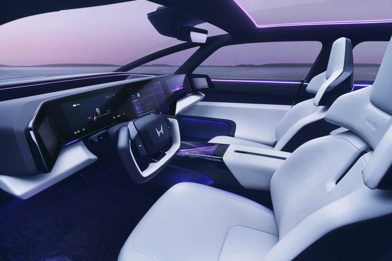Hydrogen fuel-cell electric vehicles (FCEVs), from the enduring Toyota Mirai to the next-gen Hyundai Initium, have set out to prove the viability of hydrogen technology beyond experimental stages.
With substantial investment from governments and automotive manufacturers, hydrogen-powered vehicles seem ready to support clean transportation.
Yet, battery-electric vehicles (BEVs) remain dominant on the road. So, why has hydrogen lagged in adoption?
The answer, according to experts, largely boils down to economics and infrastructure.

Speaking to Popular Science, Sergey Paltsev from the Massachusetts Institue of Technology's (MIT) Energy Initiative highlighted hydrogen technology’s high cost compared to battery EVs is a primary factor hindering its widespread adoption.
While battery costs have dropped, hydrogen infrastructure remains costly to develop. “It’s not just the cost of the car,” says Paltsev, noting that even with significant discounts in regions like California, the overall expense of running a hydrogen vehicle remains a barrier.
Unlike EVs, which can leverage existing electrical grids, hydrogen-powered vehicles require specialised refuelling stations.

Closer to home, New Zealand currently has less than 10 hydrogen stations, contrasting sharply with over 1200 public EV charging stations nationwide.
This lack of infrastructure amplifies the cost and inconvenience for potential hydrogen car owners, even as dozens more hydrogen stations are planned for NZ over the next several years.
But despite its struggles in the passenger car sector, hydrogen shows promise in commercial and industrial applications.
Gregory Keoleian, co-director at the University of Michigan’s Sustainable Systems and MI Hydrogen, suggests hydrogen may have a significant role in transport sectors where EVs face limitations.
Everything from big rigs to to rail and aviation could benefit from hydrogen fuel-cell technology, as these applications do not require refuelling stations on every corner.
“Battery-electric vehicles can be problematic when you have problems with range or fuelling time,” Keoleian explains, especially under heavy loads.
In these cases, hydrogen could enable sustainable long-distance travel where EVs currently face limitations. The dispersed nature of commercial fueling stations aligns better with hydrogen technology, creating opportunities to decarbonise heavy-duty transport.
Though not yet competitive with battery EVs, hydrogen cars could become more feasible as technology evolves.
Paltsev notes that as hydrogen adoption grows in other industries, fuelling infrastructure may develop further, leading to “positive spillovers and synergies for hydrogen cars".

Countries like Japan, where electricity costs are high, already see more economic potential in hydrogen-powered passenger vehicles, and collaborative projects like BMW and Toyota’s hydrogen car slated for 2028 and Toyota's portable hydrogen cartridge initiative suggest a continuing interest in hydrogen’s potential.
Despite current challenges, Paltsev cautions against dismissing hydrogen fuel-cell cars.
Future geopolitical factors affecting battery materials could shift the economics in hydrogen’s favour, making it an essential alternative in the global push for sustainable energy.
While EVs dominate today’s roads, hydrogen technology continues to develop, potentially playing a crucial role in decarbonising transport in the future.





